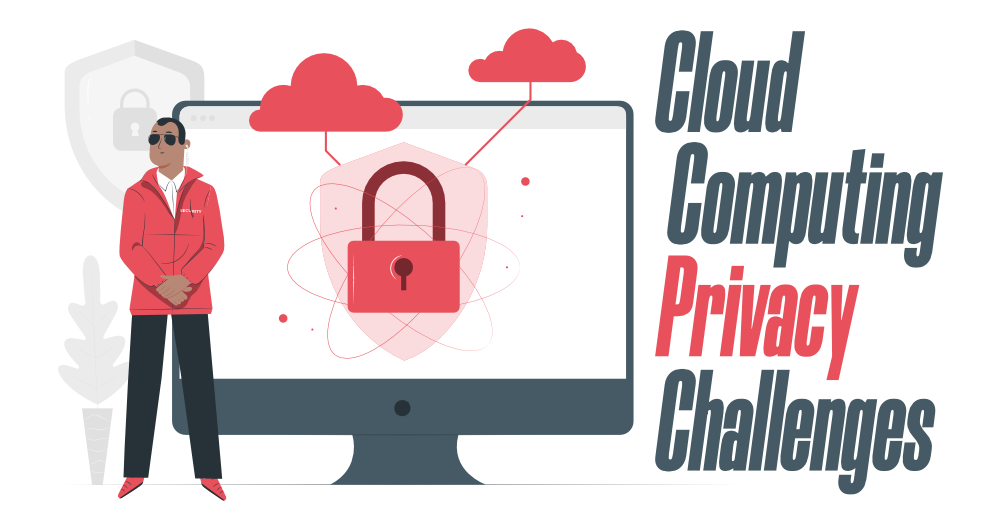7 Privacy Challenges in Cloud Computing
Last Updated :
09 Feb, 2023
Cloud computing is a widely well-discussed topic today with interest from all fields, be it research, academia, or the IT industry. It has seen suddenly started to be a hot topic in international conferences and other opportunities throughout the whole world. The spike in job opportunities is attributed to huge amounts of data being processed and stored on the servers. The cloud paradigm revolves around convenience and easy the provision of a huge pool of shared computing resources.

The rapid development of the cloud has led to more flexibility, cost-cutting, and scalability of products but also faces an enormous amount of privacy and security challenges. Since it is a relatively new concept and is evolving day by day, there are undiscovered security issues that creep up and need to be taken care of as soon as discovered. Here we discuss the top 7 privacy challenges encountered in cloud computing:
1. Data Confidentiality Issues
Confidentiality of the user’s data is an important issue to be considered when externalizing and outsourcing extremely delicate and sensitive data to the cloud service provider. Personal data should be made unreachable to users who do not have proper authorization to access it and one way of making sure that confidentiality is by the usage of severe access control policies and regulations. The lack of trust between the users and cloud service providers or the cloud database service provider regarding the data is a major security concern and holds back a lot of people from using cloud services.
2. Data Loss Issues
Data loss or data theft is one of the major security challenges that the cloud providers face. If a cloud vendor has reported data loss or data theft of critical or sensitive material data in the past, more than sixty percent of the users would decline to use the cloud services provided by the vendor. Outages of the cloud services are very frequently visible even from firms such as Dropbox, Microsoft, Amazon, etc., which in turn results in an absence of trust in these services during a critical time. Also, it is quite easy for an attacker to gain access to multiple storage units even if a single one is compromised.
3. Geographical Data Storage Issues
Since the cloud infrastructure is distributed across different geographical locations spread throughout the world, it is often possible that the user’s data is stored in a location that is out of the legal jurisdiction which leads to the user’s concerns about the legal accessibility of local law enforcement and regulations on data that is stored out of their region. Moreover, the user fears that local laws can be violated due to the dynamic nature of the cloud makes it very difficult to delegate a specific server that is to be used for trans-border data transmission.
4. Multi-Tenancy Security Issues
Multi-tenancy is a paradigm that follows the concept of sharing computational resources, data storage, applications, and services among different tenants. This is then hosted by the same logical or physical platform at the cloud service provider’s premises. While following this approach, the provider can maximize profits but puts the customer at a risk. Attackers can take undue advantage of the multi-residence opportunities and can launch various attacks against their co-tenants which can result in several privacy challenges.
5. Transparency Issues
In cloud computing security, transparency means the willingness of a cloud service provider to reveal different details and characteristics on its security preparedness. Some of these details compromise policies and regulations on security, privacy, and service level. In addition to the willingness and disposition, when calculating transparency, it is important to notice how reachable the security readiness data and information actually are. It will not matter the extent to which the security facts about an organization are at hand if they are not presented in an organized and easily understandable way for cloud service users and auditors, the transparency of the organization can then also be rated relatively small.
6. Hypervisor Related Issues
Virtualization means the logical abstraction of computing resources from physical restrictions and constraints. But this poses new challenges for factors like user authentication, accounting, and authorization. The hypervisor manages multiple Virtual Machines and therefore becomes the target of adversaries. Different from the physical devices that are independent of one another, Virtual Machines in the cloud usually reside in a single physical device that is managed by the same hypervisor. The compromise of the hypervisor will hence put various virtual machines at risk. Moreover, the newness of the hypervisor technology, which includes isolation, security hardening, access control, etc. provides adversaries with new ways to exploit the system.
7. Managerial Issues
There are not only technical aspects of cloud privacy challenges but also non-technical and managerial ones. Even on implementing a technical solution to a problem or a product and not managing it properly is eventually bound to introduce vulnerabilities. Some examples are lack of control, security and privacy management for virtualization, developing comprehensive service level agreements, going through cloud service vendors and user negotiations, etc.
Share your thoughts in the comments
Please Login to comment...